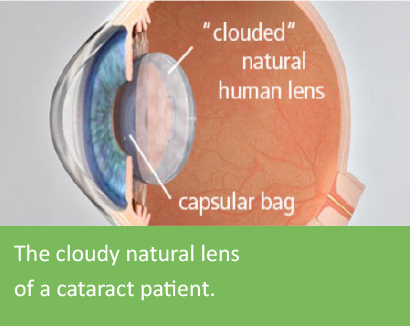
What are cataracts?
Cataract is the clouding of the originally clear lens of the eye, which usually affects both eyes.
It may look like trying to see through fog, which gets thicker over time. Glare sensitivity also often increases. Your vision becomes increasingly blurry, and images lose intensity and colour.
The haze over your eyes makes everyday life difficult: activities such as reading the paper, driving a car or watching television become a strain. If the cataract remains untreated, it may lead to complete blindness.


Visual impairment caused by cataracts
Over time, cataract leads to a severely restricted vision and should be treated surgically. Depending on the stage, it may lead to a complete loss of contrast and colour – a major impact on quality of life. You can imagine this loss of sight as a clear window being replaced by frosted glass.
Causes of cataracts
The most common cause of cataracts is the natural process of aging impacting the eye’s lens: the lens’ metabolism slows done, its water concentration reduces and it becomes harder and less stretchy.
The impact of sunlight gradually leads to the storage of yellow-brown substances and the clouding of the lens.
Age-related cataracts are mostly seen from the age of 60. But this may happen earlier if you are more susceptible.Due to its frequency, this slowly progressing aging phenomenon is considered a widespread disease.
Further causes may be eye injuries, radioactive rays, diabetes, chronic eye inflammation, congenital cataracts or a reduced metabolism.






